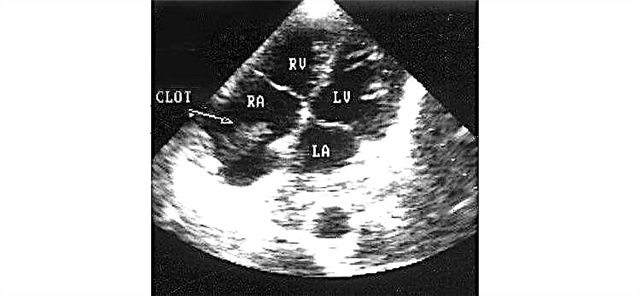Any disease must be detected in time in order to immediately begin treatment and avoid complications. Today we will consider the symptoms of chronic tonsillitis, signs of the disease at the stage of exacerbation. We will also pay attention to the distinctive features of different types of tonsillitis, the course of the disease in children. Information on possible complications, prevention and risk factors will be helpful.
Key signs of tonsillitis
 The most common symptom of chronic tonsillitis is a lump in the tonsil lacunae. They are purulent plugs consisting of necrotic tissues, toxins with infectious particles, dead blood cells. Outwardly, these clusters look like cheesy lumps of a yellowish-whitish hue. They are present on the surfaces of the tonsils, protruding as tubercles of different sizes.
The most common symptom of chronic tonsillitis is a lump in the tonsil lacunae. They are purulent plugs consisting of necrotic tissues, toxins with infectious particles, dead blood cells. Outwardly, these clusters look like cheesy lumps of a yellowish-whitish hue. They are present on the surfaces of the tonsils, protruding as tubercles of different sizes.
Plugs can go directly into the oral cavity, and sometimes there is an accumulation of liquid purulent discharge.
Let's list the main symptoms of exacerbation of chronic tonsillitis.
- The patient begins to cough because there is irritation in the throat due to foreign objects.
- An unpleasant odor may appear from the oral cavity due to inflammation.
- Patients complain of migraines.
- It becomes painful to swallow. This symptom is especially pronounced in the morning hours.
- The temperature is subfebrile. This means that it is not critical, but increased, and for a long time.
- The tonsils become loose or hard.
- The palatine arches are swollen, their redness is observed.
- On the basis of the tongue, a white-yellow coating can be detected upon examination.
- Submandibular lymphatic, cervical nodes increase. With movements, palpation (pressing with fingers), their soreness is felt.
- The patient gets tired quickly, even from the usual simple work, complains of constant fatigue, chronic weakness.
- Specific adhesions may form between the tonsils and palatine arches.
It is imperative to identify the disease as quickly as possible and begin effective treatment as soon as possible. Otherwise, chronic tonsillitis can not only turn into an exacerbation stage, but also cause all sorts of negative consequences, up to severe, life-threatening complications of the patient.
Complications of tonsillitis
The most common complication is sore throats. They are repeated, starting 6 times during the year. Also, due to chronic tonsillitis, glomerulonephritis or endocarditis, rheumatoid arthritis can develop. As a result, heart valves, joints, kidneys are under attack. This is extremely dangerous, and in the end it can even provoke death.
What preventive measures can you take?
Of course, first of all, you should take care of the provision of qualified medical care. You should consult a doctor, undergo an examination, and pass the necessary tests. Then the specialist himself will determine the optimal methods of prevention, treatment, based on the symptoms of chronic tonsillitis, the course of the disease, and the results of the examination.
It is important to lead a healthy lifestyle, avoid bad habits, constantly pay attention to strengthening the immune system. Preventive measures are similar to those for preventing colds.
A big plus for the body is reasonable physical activity, active rest and hardening. It is advisable to protect yourself from contact with infectious patients, as well as eliminate the risk of hypothermia.
If a person has already identified the initial signs of chronic tonsillitis, the disease is at the stage of exacerbation, it is necessary:
- irrigate the nasopharynx with special preparations;
- gargle regularly;
- take antiseptic drugs prescribed by a doctor;
- a good solution is to undergo the procedure for washing the tonsils in stationary conditions
 hospitals.
hospitals.
It is the preventive measures taken in a timely manner that will prevent the development of the focus of infection, exacerbation of chronic tonsillitis.
They stop inflammation, relieve irritation and eliminate toxins, pathogenic environment, relieve the patient of unpleasant symptoms. It is also important to carefully study the symptoms of chronic tonsillitis in order to draw up the correct picture of the course of the disease, control it at all stages and correctly select the treatment. This avoids complications.
The course of chronic tonsillitis in adults
Consider the features of the course of tonsillitis in adults, signs of a chronic disease, symptoms during exacerbation, as well as probable complications, the most widespread. We will draw on data from modern medical practice.
Now experts say that tonsillitis is a common ailment. Most often, the development of the disease is associated with risk factors, improper lifestyle, weakening of the immune system. Signs largely depend on the stage of development of the pathology. For example, at the initial stage, the symptoms are almost invisible.
How to identify a disease in time if it can gradually develop for a long time without visible inconveniences? The solution is obvious: you should be regularly examined by a doctor. You can also carefully inspect your throat yourself without using tools. This is what the specialist will discover during the examination.
- Swelling of the palatine arches.
- Looseness of lymphoid tissue.
- Enlargement of the tonsils.
- Redness of the mucous membranes.
- Depressions on the surface of the tonsils, formed due to the loss of purulent plugs.
- Directly purulent plugs in the tonsils, consisting of bacteria, necrotic tissues, blood clots.
 Sometimes patients complain of the following symptoms characteristic of an exacerbation of chronic tonsillitis:
Sometimes patients complain of the following symptoms characteristic of an exacerbation of chronic tonsillitis:
- insignificant, but regular and prolonged increase in body temperature;
- feeling of a lump, foreign object in the throat;
- discomfort in the mouth;
- increased heart rate;
- discomfort in the ears;
- headache;
- a feeling of dryness in the throat, provoking involuntary coughing.
Unfortunately, sometimes the disease proceeds so latently that the first symptoms appear only after complications:
- pneumonia;
- phlegmon of the neck;
- abscesses with the spread of pus;
- bronchitis;
- endocarditis due to infection in the heart cavity, circulatory system.
Experts already know exactly what diseases and symptoms can signal their root cause - chronic tonsillitis. For example, if polyarthritis or rheumatism, rheumatic heart disease or lupus erythematosus are diagnosed, the doctor will certainly prescribe a thorough examination of the tonsils and palate.
Exacerbation of chronic tonsillitis
 When a stage of exacerbation of chronic tonsillitis is observed, the symptoms are largely similar to those of an acute bacterial infection. Such an aggravation occurs as a reaction to contact with all kinds of harmful microorganisms, namely bacteria and fungi, viruses. At the same time, there are specific signals, despite the presence of universal features characteristic of inflammatory processes.
When a stage of exacerbation of chronic tonsillitis is observed, the symptoms are largely similar to those of an acute bacterial infection. Such an aggravation occurs as a reaction to contact with all kinds of harmful microorganisms, namely bacteria and fungi, viruses. At the same time, there are specific signals, despite the presence of universal features characteristic of inflammatory processes.
The general signs are as follows.
- There is a cough, a feeling of dryness and a sore throat, which is significantly worse at night. As a result, patients do not get enough sleep and feel even worse, their immune system is weakened.
- The lymph nodes are noticeably enlarged, especially under the lower jaw. With movements, swallowing, palpation, pain occurs in them.
There are also symptoms of viral tonsillitis, both chronic and in the acute stage.
- Lacrimation begins due to allergic reactions.
- Much mucus is formed, the mucous membranes of the nose swell.
- The tonsils increase in size so much that it can be easily identified visually during examination.
- There are obvious signs characteristic of general intoxication of the body. Patients suffer from dyspepsia, muscle weakness and dizziness, joint pain and headache.
- Body temperature can suddenly rise sharply, up to critical levels of 39-40 degrees.
When a common viral sore throat is observed, the symptoms of the disease pass quickly enough. Most often, it is enough for this to be treated for a week.
When it is not possible to cope with the disease, we are already talking about a secondary bacterial infection. It occurs in favorable conditions when the local protective properties of the tonsils are reduced.
Bacterial tonsillitis
 It is also important to know the signals that the body gives in case of bacterial tonsillitis. It appears as an exacerbation of a chronic disease, a complication.
It is also important to know the signals that the body gives in case of bacterial tonsillitis. It appears as an exacerbation of a chronic disease, a complication.
- The uvula, mucous membranes of the oropharynx become inflamed.
- The number of putrefactive bacteria increases dramatically, which results in an extremely bad breath.
- There is an elevated, but insignificant temperature.
- Purulent plugs begin to form in the tonsils.
- On the back of the pharynx, the lymph nodes are noticeably enlarged.
- On the upper part of the tongue, the doctor will immediately notice a specific grayish coating.
If a person already has problems with the immune system, immunodeficiency, a fungal infection may occur, and already against its background, tonsillitis will develop. In this case, the following symptoms are detected.
- On the surfaces of the mucous membranes, on the tonsils, characteristic membranous deposits of a grayish hue are visible.
- If the films are removed, bleeding sores remain in their place.
- There are no symptoms of body intoxication.
Types of tonsillitis
Several types of ailment can be distinguished, based on the external manifestations of the disease. Let's consider the main types.
- In case of diphtheria disease, the surfaces of the films have a yellow-gray color.
- When the ailment is of the lacunar type, extensive films form on the tonsils.
- If the tonsillitis is follicular, the entire lymphoid tissue is covered with small-point formations.
Illness in children
Let's dwell on the features, symptoms of the course  chronic tonsillitis in children. Usually, their signs are more pronounced, and other organs are also affected, complications quickly begin.
chronic tonsillitis in children. Usually, their signs are more pronounced, and other organs are also affected, complications quickly begin.
- Cough in young children occurs not only directly due to tonsillitis, but also due to strong irritation of the receptors with mucus that flows down the back wall.
- The child may refuse to eat due to sore throat, as well as general intoxication of the body.
- The so-called abdominal syndrome also occurs in children. It is characterized by vomiting and decreased appetite, stool disturbances and bloating.
Unfortunately, anatomical features and physiological nuances put children at risk.
They have serious complications: for example, false croup, which can be life-threatening. When a false croup develops, the tissue swells around the vocal cords. As a result, the glottis narrows sharply, the child begins to breathe very noisily. If suffocation also occurs, it is already directly life threatening. In this case, an ambulance must be called immediately.
Risk factors
There are many risk factors. We will focus on the main ones.
There are several diseases that subsequently often provoke the onset of this ailment.
- Lowered immunity in various infectious diseases: tuberculosis and scarlet fever, measles.
- Disruptions in nasal breathing due to polyps, sinusitis and sinusitis, curvature of the nasal septum.
- Hereditary predisposition.
There are all sorts of unfavorable moments because of which people are at risk.
- Hypothermia of the body.
- Lack of fluid intake.
- Stress, overwork, sleep disturbances.
- Poor environmental situation.
- Improper nutrition.
- Physical inactivity.
- Bad habits (exposure to nicotine, alcohol).
It is very important to take care of your health, take preventive measures and diagnose the disease in time.

 hospitals.
hospitals.

